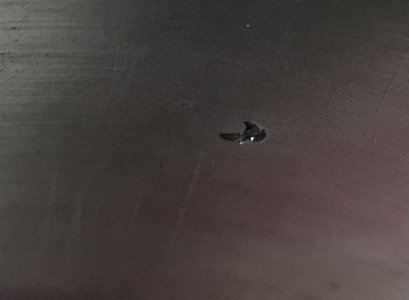ActionYobbo
Well-known member
Another setback. I finally got a 200 block with a stock bore very low miles. Had a “head gasket leak” and there was water in the oil so I pulled it down and the head gasket leak turned out to be a few pinholes in the sidewall of #6 inline with the freeze plug. Looks like a casting inclusion or mishap. So now I have another boat anchor for the pile. Unless I can get it sleeved if that’s not too costly. I have another block that’s +60 and we’ll worn that I measured wall thickness at .085 in that same area
Edit to attach a picture
Hole is a bit smaller than a match stick
Edit to attach a picture
Hole is a bit smaller than a match stick
Attachments
Last edited:

